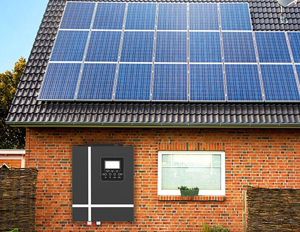Solar photovoltaic systems are mainly divided into off-grid photovoltaic power generation systems and grid-connected photovoltaic power generation systems. The off-grid photovoltaic power generation system is mainly composed of solar cell components, controllers, and batteries. To supply power to the AC load, an AC inverter needs to be configured. The grid-connected photovoltaic power generation system is that the direct current generated by the solar module is converted into the alternating current that meets the requirements of the mains grid through the grid tie inverter, and then directly connected to the public grid.
A solar photovoltaic system consists of solar panels, solar charge controllers, batteries and inverters. The solar panel is the core part of the solar photovoltaic system. The function of the solar panel is to convert the light energy of the sun into electrical energy, and then output the direct current and store it in the battery. The solar panel is one of the most important components in the solar photovoltaic system, and its conversion rate and service life are important factors that determine whether the solar cell has use value. The solar charge controller is composed of a dedicated processor CPU, electronic components, displays, switching power tubes, etc. The function of the battery is to store the electrical energy emitted by the solar panel when there is light, and release it when needed. The direct output of solar energy is generally 12VDC, 24VDC, 48VDC. In order to provide power to 220VAC electrical appliances, it is necessary to convert the DC power generated by the solar photovoltaic system into AC power, so an inverter is required.

How does the solar PV system work?
During the daytime, under the condition of illumination, the solar cell components generate a certain electromotive force, and the solar cell square array is formed through the series and parallel connection of the components, so that the square array voltage can meet the requirements of the system input voltage. Then, the battery is charged through the charge and discharge controller, and the electric energy converted from the light energy is stored.
At night, the battery pack provides the input power for the inverter, and through the function of the inverter, the DC power is converted into AC power, which is sent to the power distribution cabinet, and the power is supplied by the switching function of the power distribution cabinet. The discharge of the battery pack is controlled by the controller to ensure the normal use of the battery. The photovoltaic power station system should also have limited load protection and lightning protection devices to protect the system equipment from overload operation and avoid lightning strikes, and maintain the safe use of system equipment.
